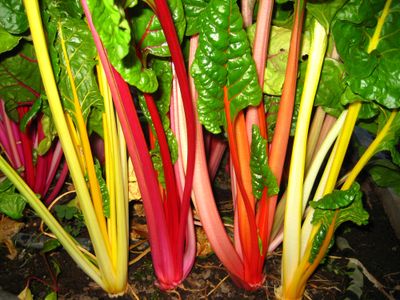Give your garden A good meal
Compost and cover crops can help make soil more productive

Even though fall hasn’t officially arrived, there is a definite chill in the air when the sun goes down. It’s time to talk about putting the vegetable garden to bed for the winter once we have had a killing frost.
Of all the tasks we should accomplish this fall, the most important is to replenish the soil so it will be productive for the next growing season. Add organic materials such as compost, well-rotted manure, leaves and grass clippings from an untreated lawn to the soil at this time. They will break down over the fall and winter and give you a jump start on spring preparations.
I like to take plants that decompose easily – lettuce, spinach, potato plants and dry onion stalks – and turn them under the soil. My favorite tool for this is a spading fork. It helps me break up the soil to a depth of one foot.
The tougher plants – cornstalks, tomatoes, broccoli, peppers, squash and the vines from pole beans, peas and cucumbers – should be chopped up to accelerate decomposition. This can be accomplished with a shovel, hoe or a chipper-shredder. When you expose a lot of plant surfaces in this way, it provides more area for beneficial bacteria to latch on and start breaking them down. This material can be tilled into the soil or tossed onto the compost pile.
Something new I’m trying this fall is planting a cover crop of Austrian field peas in several of the raised beds. Cover crops are plants that are grown to protect the soil during the fall and winter, then are cut down and turned into the soil to provide nutrients and, in the case of the field peas, fix nitrogen in the soil.
This is part of my plan to improve our soil quality because good soil makes all the difference in a garden’s production. Seeds for field peas and other types of cover crops such as winter rye and vetch are available at garden centers and from mail-order companies.
Carrots, potatoes and parsnips can be left in the garden until it gets quite cold. Once harvested, carrots and parsnips can be stored in plastic bags in the vegetable drawer of your refrigerator. Potatoes should be stored in a box in a cool, dark area such as a basement or a root cellar.
If you are interested in growing garlic, plant it in October in order to harvest it next summer. Garden centers usually carry a good selection of garlic this time of year. Divide the garlic bulbs into cloves and plant them pointy side up in a prepared bed at a depth of 4 inches. They should be spaced 6 inches apart. Elephant garlic, which has enormous cloves and a milder flavor, should be planted six inches deep and about 8 inches apart.
After planting, cover the surface of the bed with a thick mulch of untreated grass clippings or straw that does not contain weed seeds. When you remove the mulch next spring, there will be small green sprouts coming up through the soil. Let them grow through the summer until the lowest two leaves turn brown, then pull them up and let them dry out of direct sunlight for a couple of weeks.
The last thing you should do is write some notes in your garden journal. Record your successes and failures, the cultivars of vegetables you grew and any other information that will be useful. Once the seed catalogs start arriving after the holidays, you will be able to plan next year’s garden with ease.